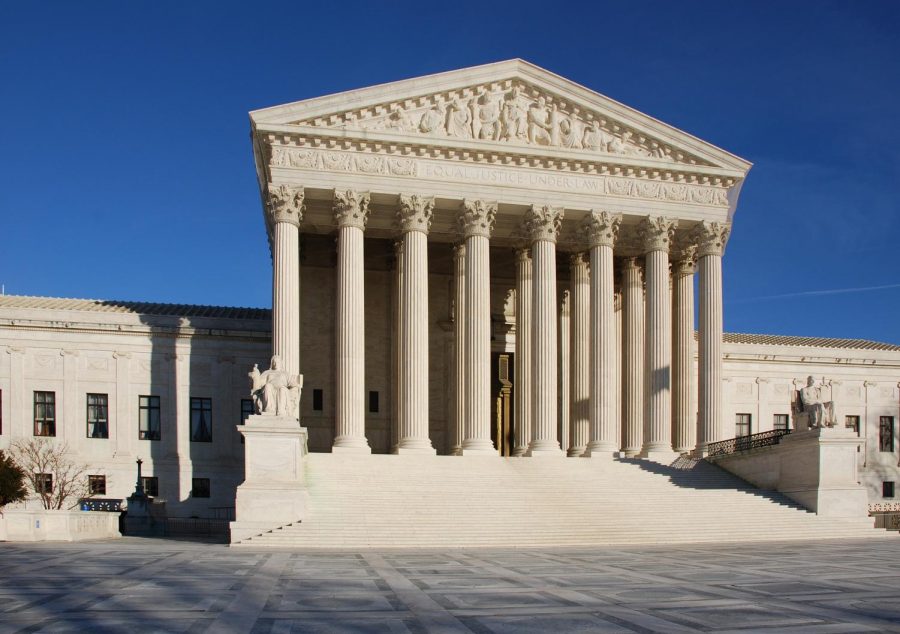Brown: Courts Should Support Compensation for Student-Athletes
July 7, 2021
Growing up, I loved to play EA Sports’ NCAA Football franchise because of its fight songs, real stadiums and a University of Utah cover athlete.
But my perception changed in September 2013, when a name, image and likeness (NIL) lawsuit canceled the franchise. This change was when I first noticed NCAA’s player compensation issue, followed by many other problems in the NCAA’s history.
Now, with the Supreme Court’s recent ruling in NCAA v. Alston, athlete rights are expanding.
After years of denying student-athletes compensation because of supposed amateurism, this ruling will usher in a new era for the NCAA, its member institutions and its players. It will likely give students a cut of the profits that they’ve earned for their schools for decades. Going forward, players must be rightfully compensated, and U.S. courts have no reason to oppose it.
Amateurism epitomizes the NCAA’s justification for not paying its student-athletes. This concept of amateurism, the meaning of which has shifted throughout the years, currently holds that athletes shouldn’t focus on monetary gain. Instead, the organization proclaims — or rather, requires — that athletes focus on the “physical, mental and social benefits to be derived [from playing their sport].”
Because of its flimsiness, amateurism hasn’t always held up in court. O’Bannon v. NCAA demonstrated this, as the 9th Circuit Court of Appeals ruled that refusing to pay players for NIL constituted an anti-competitive conspiracy.
To remedy this, the court proffered that paying the cost of attendance for students would be enough. In Alston, the remedy in O’Bannon was expanded, further compensating students with other education-related expenses. This ruling brings student-athletes closer to rightful compensation for the monetary benefit they provide their school.
Schools can afford this shift into player compensation, too. A total of 24 schools make more than $100 million off of athletics yearly. The average salary of a college football coach is $2.7 million. Kyle Whittingham, the University of Utah football coach, stands as the highest-paid public employee in the state at just over $4 million.
Coaches greatly impact team success and therefore, athletic revenue, so those salaries can arguably be justified. But obviously, individual athletes bring in millions by themselves, and for what?
College expenses don’t nearly cover the benefits that student-athletes provide to their institutions. College athletes shouldn’t be limited to education-related compensation, and the court of public opinion agrees.
According to findings from the National Sports and Society Survey, most Americans believe college athletes should be compensated above education-related expenses. The tide is turning, and the NCAA knows it.
As of June 28, 2021, an NCAA panel recommends that the amateurism clause be temporarily suspended for the upcoming academic year. This will allow players to profit off their NIL, marking a huge step in player compensation efforts. But still, the change is temporary. The battle has been won for now, but the war will rage on. And courts must be ready.
If history indicates where the NCAA will go in the future, further player compensation will undoubtedly be challenged in court. Twenty states have already passed laws allowing for student-athlete NIL compensation, and with the efforts only growing, it’ll likely come down to what the high courts rule. The NCAA will use the only argument it has, amateurism, to prop up its claim, and courts mustn’t fall for it again.
Luckily, it seems the future is hopeful for student-athletes.
Writing a concurring opinion in Alston, Justice Brett Kavanaugh noted that there were “serious questions” about remaining NCAA compensation rules holding up against existing antitrust laws. Since the court wasn’t reviewing further issues of player compensation, it couldn’t make a ruling either way. But the words from Justice Kavanaugh suggest future cases could mean problems for the NCAA.
By restricting the ability of member institutions to pay their athletes what they want, the NCAA acts as a monopoly in their market. It creates an anti-competitive environment for student-athletes, which violates the Sherman Act.
Again, all the NCAA has to offer is its tradition of amateurism. The court cannot be suckered into the appeal of tradition. It should instead look at the current NCAA for what it is — a profit-hungry, monopolistic institution that ultimately deprives its athletes of well-earned compensation.
This fight has been — and will likely continue — raging for decades. Student-athletes contribute a major amount to the athletic profits of their institution, and there’s no reason they shouldn’t reap some benefits.
With the ruling of NCAA v. Alston, student-athletes are one step closer to the ever-elusive goal. The only obstacle standing in the way, presumably, would be federal courts.
The amateurism tradition will be a strong argument, but the antitrust violations will be stronger, and high federal courts need to see that. While tradition may be a revered aspect of any institution, U.S. courts must still uphold the law.








